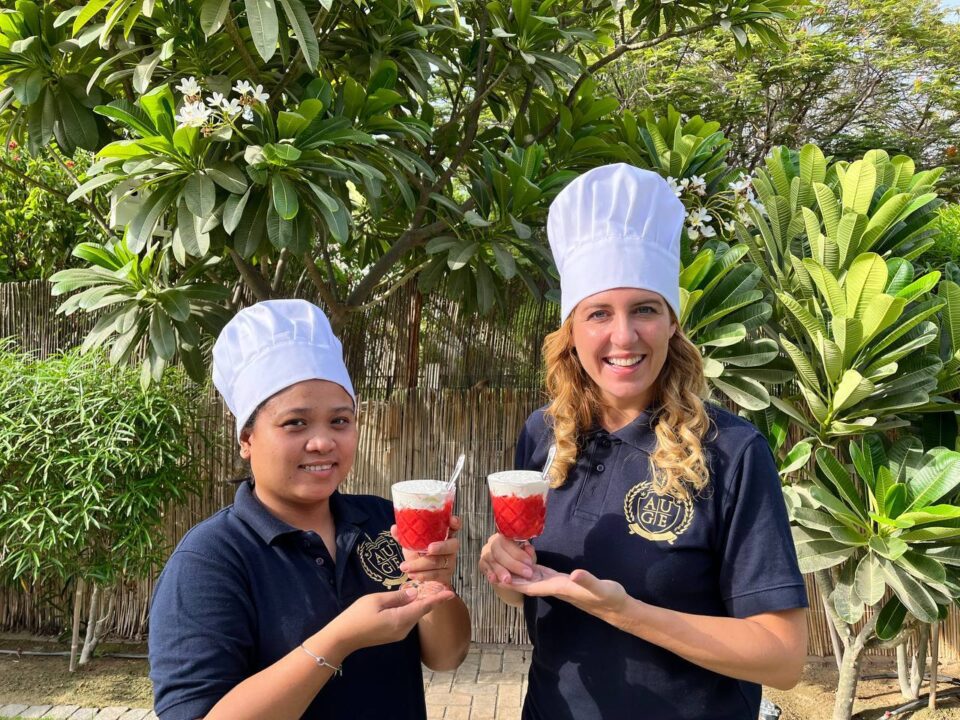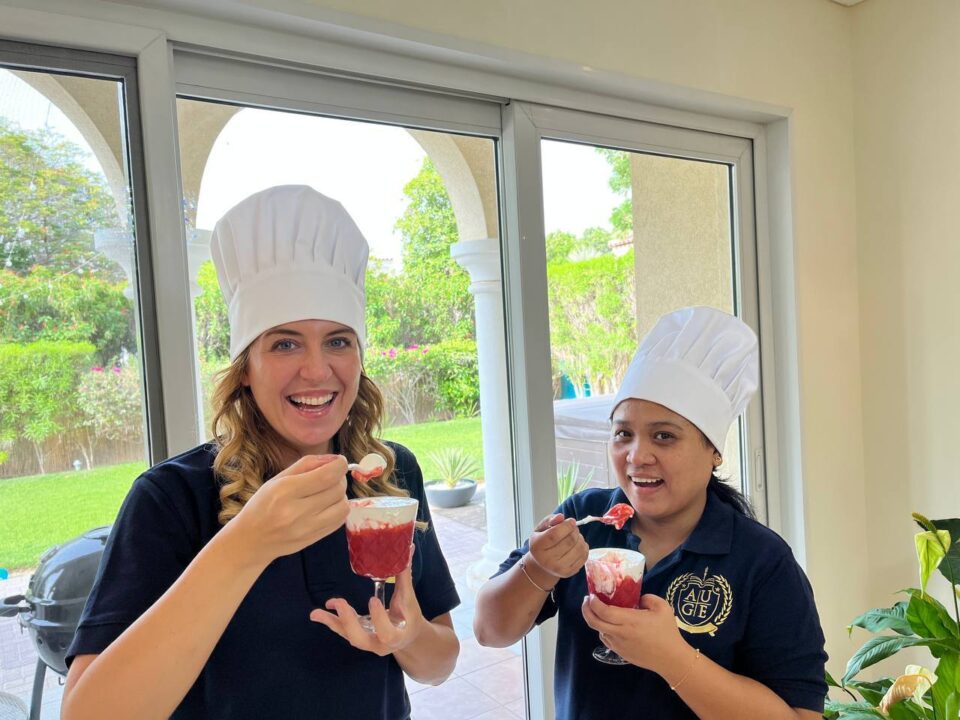Hi English lover! I’m Monica Perna, English Coach, and even today I make you “taste English” preparing with you a recipe with an international flavor that also the students of my Masterclass have already had the opportunity to prepare…
Today “Taste of English” is dedicated to Fresh Strawberry Granita
DID YOU KNOW…
The origins of granita date back to the Arab domination in Sicily where the Arabs brought the recipe for sherbet or sharbat: an iced drink typical of the Middle East, flavored with fruit juices and flower petals. In Sicily during the Middle Ages to prepare granita, the curious craft of the “nivaroli” spread, men who in winter went to collect snow on Etna, Peloritani and Iblei and all year they took care of conserving it to use it in the warm months. The snow was stored in holes called niviere, ancestors of today’s freezer, to then be used in the summer to prepare slushes and ice creams.
The Sicilian granita, today offered in numerous and delicious variations, is one of the most popular italian specialties in the world.

- CucinaItaliana
Ingredienti
Preparation
1. Rinse strawberries with cold water; let drain. Transfer berries to a blender and add sugar, water, lemon juice, balsamic vinegar, and salt.
2. Pulse several times to get the mixture moving, then blend until smooth, about 1 minute. Pour into a large baking dish. Puree should only be about 1 cm deep in the dish.
3. Place the dish uncovered in the freezer until the mixture barely begins to freeze around the edges, about 45 minutes. Mixture will still be slushy in the center.
4. Lightly stir the crystals from the edge of the granita mixture into the center, using a fork, and mix thoroughly. Close the freezer and chill until granita is nearly frozen, 30 to 40 more minutes. Mix lightly with a fork as before, scraping the crystals loose. Repeat freezing and stirring with the fork 3 to 4 times until the granita is light, crystals are separate, and granita looks dry and fluffy.
5. Portion granita into small serving bowls to serve.
Cook’s Notes:
This will work with other fruit and berry purees. Hull strawberries by using the tip of a small, sharp paring knife inserted at a 45-degree angle near the hull. Rotate the berry to cut out a small cone containing the hull. It saves a little bit of fruit from each strawberry. Freezing times will vary greatly depending on how cold, empty, large, etc., your freezer is. Just keep checking and forking!
Add some whipped cream to the granita if you want a tastier dessert (but do not look at calories!).
Enjoy!

Granita alla Fragola Fresca – Traduzione in italiano
Ciao amante dell’inglese! Sono Monica Perna, English Coach, e anche oggi ti faccio “assaporare l’inglese” preparando con te una ricetta internazionale che anche gli studenti della mia Masterclass hanno già avuto modo di preparare…
Oggi “Taste of English” è dedicato alla Granita alla Fragola Fresca
LO SAPEVATE…
che le origini della granita risalgono alla dominazione araba in Sicilia dove gli Arabi portarono la ricetta dello sherbet o sharbat: una bevanda ghiacciata tipica del Medio Oriente, aromatizzata con succhi di frutta e petali di fiori. In Sicilia nel corso del Medioevo per preparare la granita si diffuse il curioso mestiere dei “nivaroli”, uomini che d’inverno andavano a raccogliere la neve sull’Etna, sui Peloritani e sugli Iblei e tutto l’anno si occupavano di conservarla per usarla nei mesi caldi. La neve veniva conservata in buche chiamate niviere, antenate dell’odierno congelatore, per essere poi utilizzata d’estate per preparare granite e gelati. La granita siciliana, oggi proposta in numerose e sfiziose varianti, è una delle specialità italiane più popolari al mondo.
Ingredienti
950 gr di fragole mature, mondate e tagliate a metà
⅓ tazza di zucchero bianco, o a piacere 1 tazza d’acqua
½ cucchiaino di succo di limone (facoltativo)
¼ cucchiaino di aceto balsamico (facoltativo)
1 pizzico di sale panna montata
Preparazione
1. Sciacquare le fragole con acqua fredda; far scolare. Trasferire i frutti di bosco in un frullatore e aggiungere zucchero, acqua, succo di limone, aceto balsamico e sale.
2. Frullare più volte per far muovere la miscela, quindi frullare fino a ottenere un composto liscio, circa 1 minuto. Versare in una grande teglia. La purea dovrebbe essere profonda solo circa 1 cm nel piatto.
3. Riponete la teglia scoperta nel congelatore fino a quando il composto inizia a congelare appena intorno ai bordi, circa 45 minuti. Il composto sarà ancora granuloso al centro.
4. Mescolare leggermente i cristalli dal bordo della miscela di granite al centro, aiutandosi con una forchetta, e mescolare bene. Chiudi il congelatore e lascia raffreddare finché la granita non sarà quasi congelata, altri 30-40 minuti. Mescolare leggermente con una forchetta come prima, raschiando bene i cristalli. Ripetere il congelamento e mescolare con la forchetta 3 o 4 volte fino a quando la granita non è chiara, i cristalli sono separati e la granita appare asciutta e soffice.
5. Porre la granita in ciotoline da servire per servire.
Note per la preparazione:
Questo funzionerà con altre puree di frutta e bacche. Sbucciate le fragole usando la punta di un coltellino affilato inserito con un angolo di 45 gradi vicino allo scafo. Ruota la bacca per ritagliare un piccolo cono contenente il guscio. Risparmia un po’ di frutta da ogni fragola. I tempi di congelamento variano notevolmente a seconda di quanto è freddo, vuoto, grande, ecc. il congelatore. Continua a controllare e biforcare! Aggiungi un po’ di panna montata alla granita se vuoi un dessert più gustoso (ma non guardare alle calorie!).
Buon divertimento!
Dosi variate per porzioni